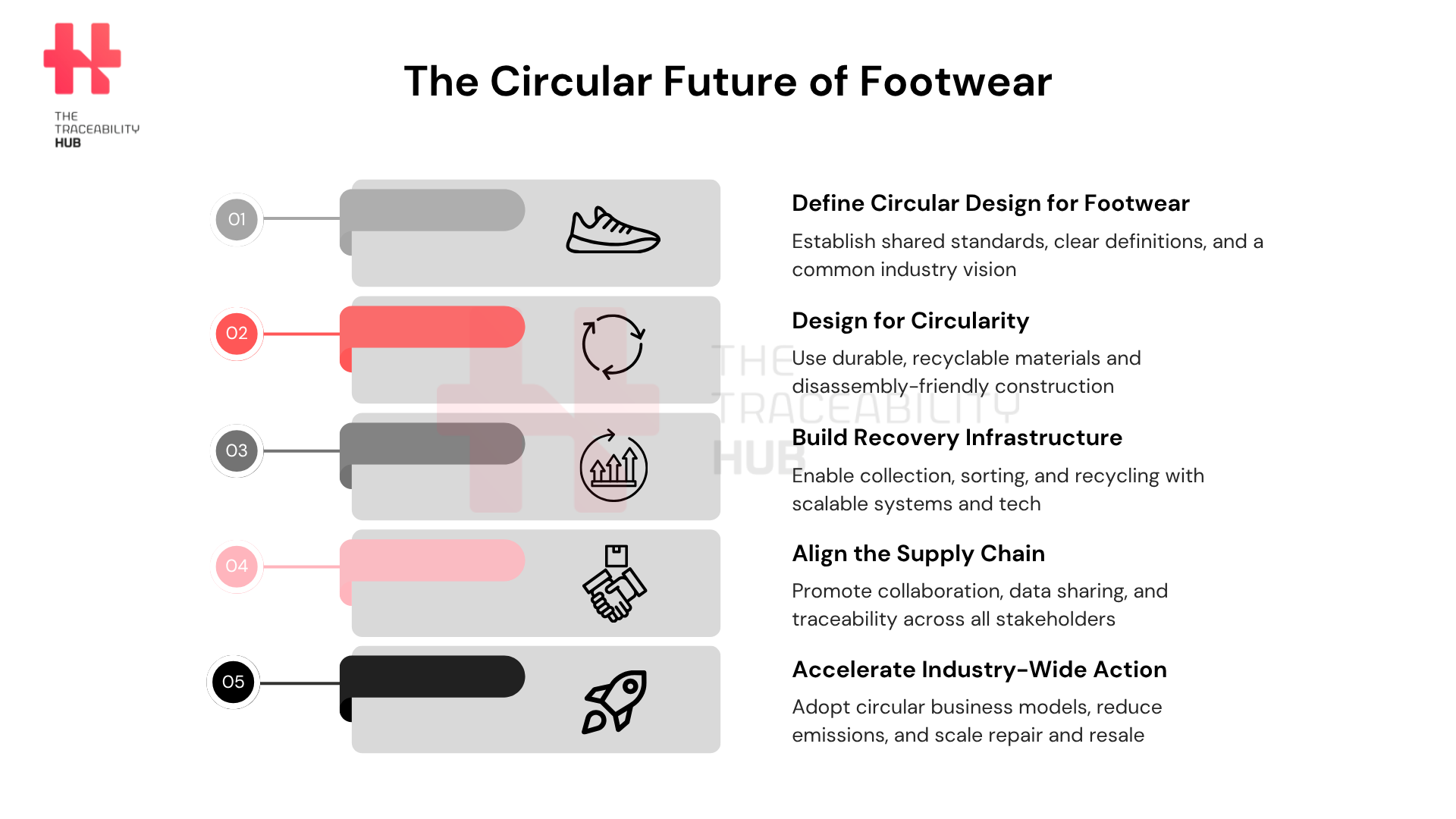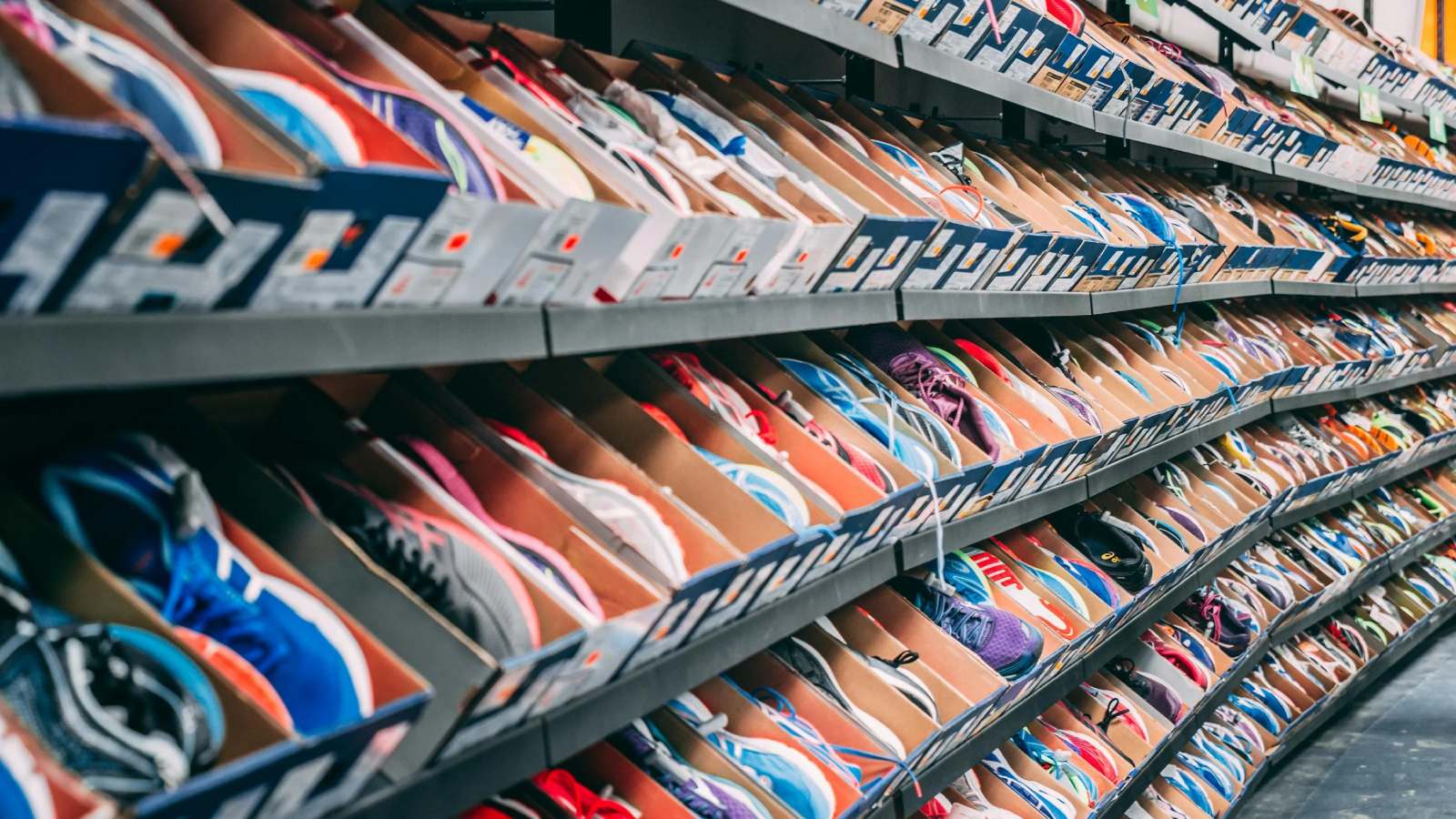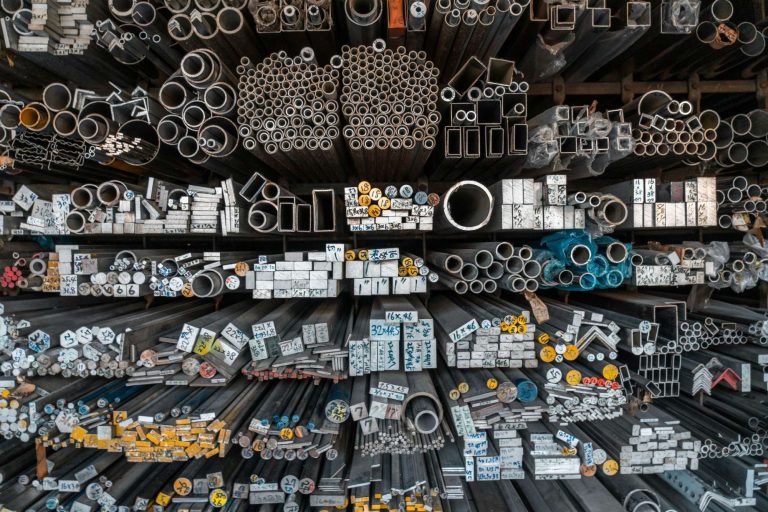Green Footwear: The Footwear Waste Crisis
Let’s face it, shoes are piling up in landfills at an alarming rate. Over 23.8 billion pairs are tossed every year, according to the World Footwear Yearbook (2023). And the problem goes deeper than just volume. Unlike clothing, which often uses one or two types of fabric, shoes are made from a complex mix including rubber, leather, foam, adhesives, etc. And different parts such as sole, upper, heel, etc. This complexity makes them incredibly hard to recycle.
We’ve reached a turning point. As the world moves toward sustainability, the footwear industry has no choice but to evolve. Circular economy footwear isn’t a nice-to-have anymore; it’s the way forward if we want to cut waste and extend the life of our products.
Conscious Footwear: The Urgency of Circularity in Footwear
Footwear is a resource-heavy business. Without new thinking, the environmental toll will only keep climbing. Circular footwear means looking at every part of a shoe’s life, from how it’s designed, made, used, and eventually discarded. This helps find smarter, greener ways to handle each step.
It’s about more than making small changes. It’s about reimagining the entire system, so waste is designed out from the beginning.
What Circularity Means for Footwear
Circularity isn’t just about recycling. In footwear, it means making shoes that are built to last, easy to fix, and recyclable shoes when they’ve finally worn out. It’s about squeezing the most life out of each product, then turning those materials into something new.
But here’s the catch: the industry doesn’t have a clear, shared definition of what “circular footwear” really means. This lack of clarity leads to a patchwork of small efforts that don’t add up to much. We need a common vision of sustainable footwear to make real progress.
Future of Sustainable Shoes: Challenges Blocking Progress
Even with good intentions, several obstacles make it hard for brands to go circular footwear:
- Material complexity hampers disassembly and recyclability
Shoes are made with so many fused parts that pulling them apart for recycling is often just too hard or too expensive. - Lack of standards creates inefficiencies across brands
Without agreed-upon guidelines, brands are working in silos, often duplicating efforts or missing key opportunities to collaborate with their suppliers. - Fragmented supply chains hinder alignment and data-sharing
Everyone from raw material suppliers to recyclers is working with different tools, technology, goals, and timelines. - Slow innovation adoption delays progress compared to apparel
While fashion is making strides in circular design, footwear is still catching up.
The Circular Future of Footwear

Pillar One: Designing Footwear for Circularity
If we want shoes to live second and third lives, we have to start at the drawing board. That means rethinking how we design shoes without losing sight of comfort and style.
- Disassembly-friendly construction
Make it easier to take shoes apart at the end of their life by simplifying how they’re built. - Recycled materials shoes: Recyclable, renewable materials
Choose materials that can either return to nature or re-enter the supply chain. - End-of-life shoe programs: Enhanced durability to reduce consumption
Build shoes that last longer, so people don’t need to replace them as often.
These changes at the design stage set the foundation for a circular future.
Pillar Two: Enabling Product Recovery and Recycling
Design alone won’t solve the problem. We also need solid systems in place to collect, sort, and recycle worn-out shoes. Without this infrastructure, even the best designs can’t reach their full circular potential.
- Zero waste shoes: accessible collection and return programs
Make it easy and rewarding for customers to return old shoes instead of tossing them. This is also improving the customers engagement and the possibility to collect data from the end users. - Sorting tech for complex, multi-material shoes
Use advanced tools to identify and separate different shoe components accurately. - Recycled materials shoes: Specialized recycling plants tailored to footwear materials
Build facilities that can handle the unique mix of materials found in shoes.
With the right support systems, circular footwear becomes not just possible, but scalable.
Right now, brands are moving in different directions, often duplicating efforts or missing opportunities to work together. A shared framework could change that.
With alignment, we can:
- Create common definitions and standards
- Encourage footwear brands to collaborate rather than compete on sustainability
- Build consistent certification systems
- Share data and improve transparency along the supply chain
This kind of unity would speed up innovation, reduce waste, and make it easier for consumers to trust sustainability claims.
Core Goals of Circular Innovation in Shoes
The goals of circularity are simple, but they’re all connected and crucial:
- Zero waste shoes: Keep products in use longer
Prioritize repair and durability to extend the life of every pair. - Eco-friendly shoes: Cut emissions through better materials
Use materials that lower the carbon footprint from the start. - End-of-life shoe programs: Eliminate waste with closed-loop recycling
Design shoes so their components can be easily disassembled and turned into something new instead of ending up in a dump.
When done right, circularity creates a system where nothing goes to waste.
The Circular Economy Footwear Imperative: Act Now or Fall Behind
Brands that step up now will earn consumer loyalty, prepare for stricter regulations, and find new revenue in repair, resale and recyclable shoes. The rewards? Stronger resilience, a cleaner footprint, and a leading role in shaping the future of fashion.
But the cost of delay? Missed opportunities, lost trust, and a growing environmental burden.
Read more: Denim in the Circular Economy: How Levi’s Is Closing the Loop on Fashion Waste






